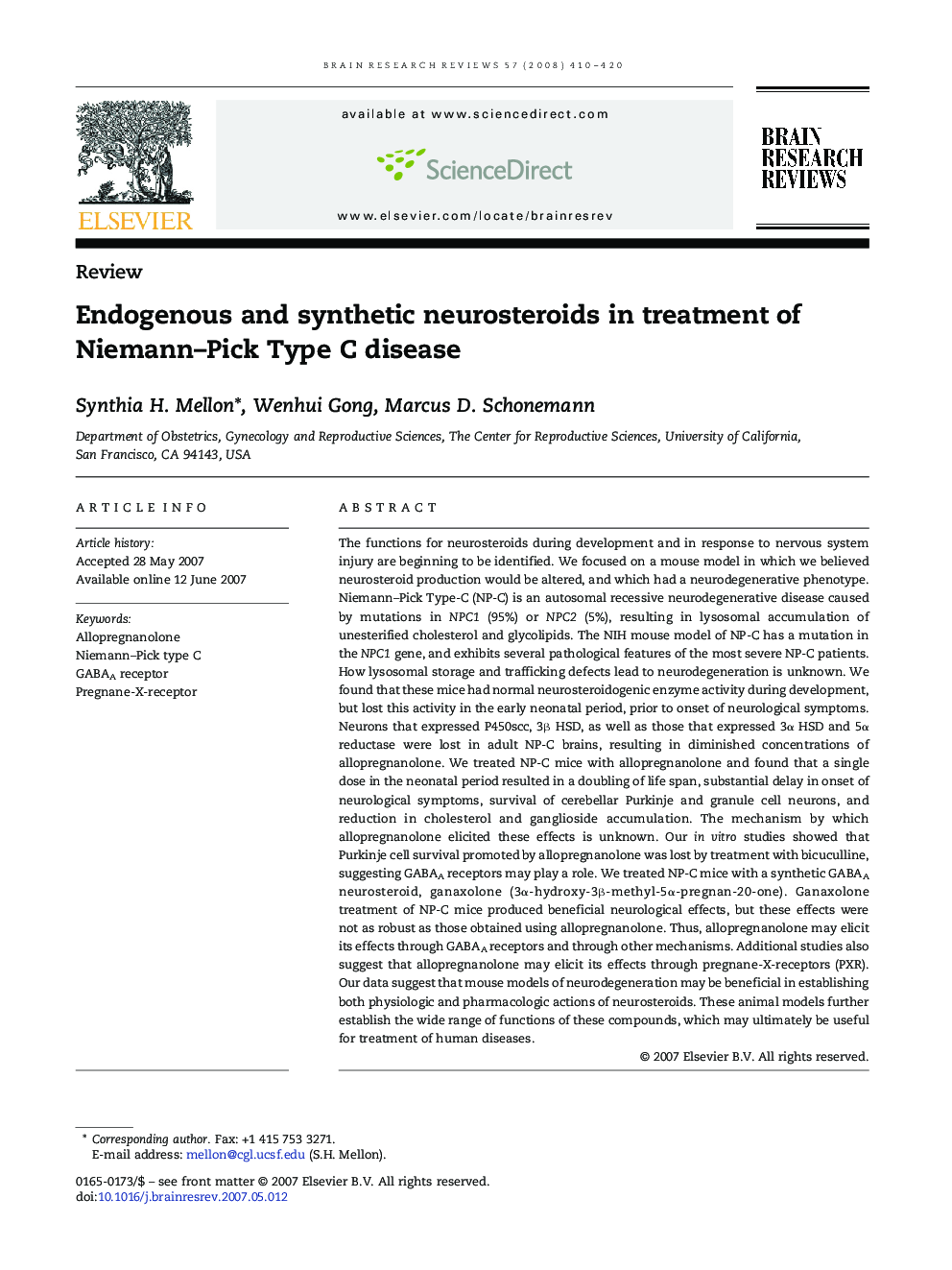| کد مقاله | کد نشریه | سال انتشار | مقاله انگلیسی | نسخه تمام متن |
|---|---|---|---|---|
| 4333839 | 1294755 | 2008 | 11 صفحه PDF | دانلود رایگان |

The functions for neurosteroids during development and in response to nervous system injury are beginning to be identified. We focused on a mouse model in which we believed neurosteroid production would be altered, and which had a neurodegenerative phenotype. Niemann–Pick Type-C (NP-C) is an autosomal recessive neurodegenerative disease caused by mutations in NPC1 (95%) or NPC2 (5%), resulting in lysosomal accumulation of unesterified cholesterol and glycolipids. The NIH mouse model of NP-C has a mutation in the NPC1 gene, and exhibits several pathological features of the most severe NP-C patients. How lysosomal storage and trafficking defects lead to neurodegeneration is unknown. We found that these mice had normal neurosteroidogenic enzyme activity during development, but lost this activity in the early neonatal period, prior to onset of neurological symptoms. Neurons that expressed P450scc, 3β HSD, as well as those that expressed 3α HSD and 5α reductase were lost in adult NP-C brains, resulting in diminished concentrations of allopregnanolone. We treated NP-C mice with allopregnanolone and found that a single dose in the neonatal period resulted in a doubling of life span, substantial delay in onset of neurological symptoms, survival of cerebellar Purkinje and granule cell neurons, and reduction in cholesterol and ganglioside accumulation. The mechanism by which allopregnanolone elicited these effects is unknown. Our in vitro studies showed that Purkinje cell survival promoted by allopregnanolone was lost by treatment with bicuculline, suggesting GABAA receptors may play a role. We treated NP-C mice with a synthetic GABAA neurosteroid, ganaxolone (3α-hydroxy-3β-methyl-5α-pregnan-20-one). Ganaxolone treatment of NP-C mice produced beneficial neurological effects, but these effects were not as robust as those obtained using allopregnanolone. Thus, allopregnanolone may elicit its effects through GABAA receptors and through other mechanisms. Additional studies also suggest that allopregnanolone may elicit its effects through pregnane-X-receptors (PXR). Our data suggest that mouse models of neurodegeneration may be beneficial in establishing both physiologic and pharmacologic actions of neurosteroids. These animal models further establish the wide range of functions of these compounds, which may ultimately be useful for treatment of human diseases.
Journal: Brain Research Reviews - Volume 57, Issue 2, 14 March 2008, Pages 410–420